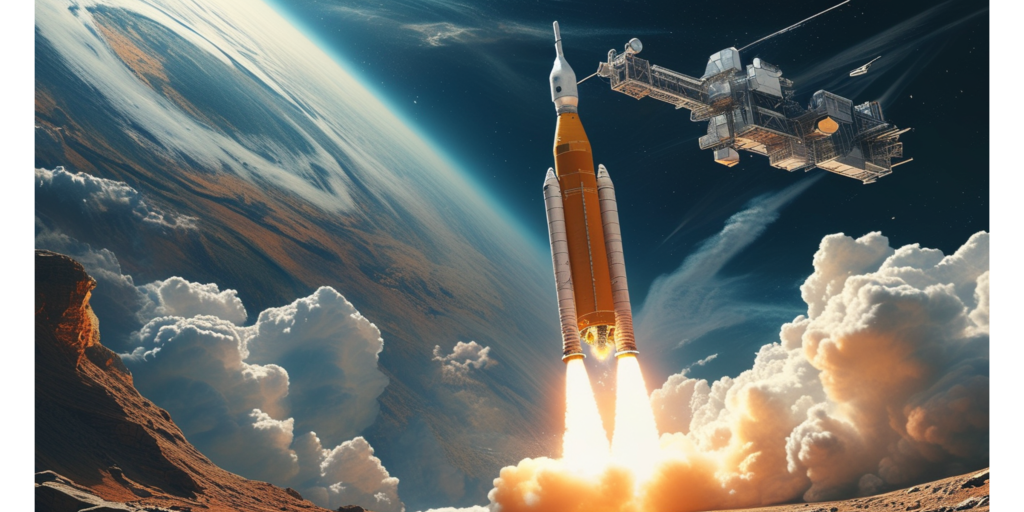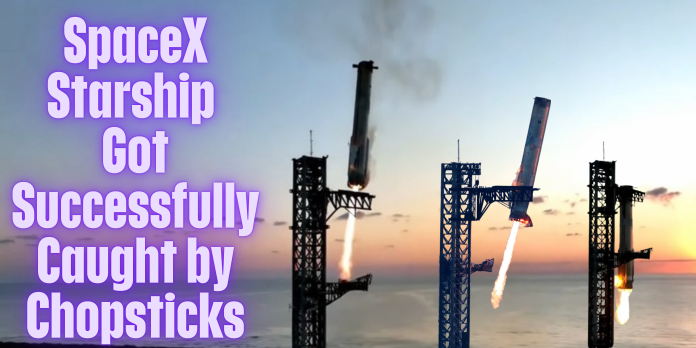Introduction
SpaceX, the brainchild of visionary entrepreneur Elon Musk, has always been at the forefront of space innovation. With a clear goal of making humanity a multi-planetary species, the company continues to push boundaries in space exploration and technology. One of SpaceX’s most ambitious projects is the Starship, a fully reusable spacecraft designed for missions to the Moon, Mars, and beyond.
Recently, SpaceX achieved an extraordinary milestone-successfully catching the Starship’s Super Heavy booster using a pair of giant mechanical arms, humorously nicknamed the “chopsticks.” This remarkable feat has captured the imagination of space enthusiasts worldwide, showcasing SpaceX’s groundbreaking innovations in rocket recovery. But how did they pull it off? Let’s dive into the fascinating world of Starship, the Super Heavy booster, and the chopsticks that made history.
Background: What Are the Starship and Super Heavy Booster?
Starship is SpaceX’s next-generation spacecraft, designed to transport crew and cargo to distant destinations such as the Moon and Mars. It is composed of two stages: the Starship spacecraft itself, which is the upper stage, and the Super Heavy booster, which is the lower stage responsible for launching Starship out of Earth’s atmosphere.
The Super Heavy booster is a critical piece of the system because it provides the thrust needed to lift the massive Starship into space. With a height of over 70 meters, it is powered by 33 Raptor engines, making it one of the most powerful rockets ever built. The goal for SpaceX is not just to send these rockets into space but to bring them back intact, allowing for rapid reuse—essential for reducing costs and making space travel more sustainable.
In the early stages of development, SpaceX focused on recovering their Falcon 9 rockets, which land vertically on drone ships. However, with the much larger and heavier Starship, they needed a new approach—one that led to the development of the “chopsticks” landing system.

Previous Milestones and Challenges
Before this recent success, SpaceX had made several attempts to refine the Starship and Super Heavy booster recovery process. Early test flights faced numerous challenges, including explosions during landing and difficulties managing the immense thrust and precision required for safe recovery.
The idea of using “chopsticks” to catch the booster was part of Elon Musk’s vision to make rocket landings even more efficient. Traditional landing systems use legs that deploy from the base of the rocket, but this method adds weight and complexity to the design. By developing a mechanism that could “catch” the rocket mid-air, SpaceX aimed to reduce unnecessary components, making the booster lighter and more cost-effective.
The Technology Behind the “Chopsticks”
The chopsticks are essentially two enormous mechanical arms attached to the launch tower, which SpaceX calls the Mechazilla. The arms are designed to move both horizontally and vertically along the tower, positioned to catch the returning Super Heavy booster in mid-air.

How Do the Chopsticks Work?
After a launch, the Super Heavy booster separates from the Starship spacecraft and begins its descent back to Earth. Instead of landing on a platform, as with the Falcon 9 boosters, the Super Heavy is designed to be guided back to the launch tower, where the chopsticks await.
The chopsticks’ arms must synchronize with the descending booster, grabbing it around its midsection with incredible precision. This approach requires not only mechanical accuracy but also sophisticated algorithms for controlling the descent speed, direction, and position of the booster.
Engineering Challenges
Creating a system capable of catching a rocket in mid-air is no small feat. The chopsticks must handle the weight of the booster, which is about 200 metric tons when empty. Additionally, they must withstand the forces generated during the catch, all while moving with pinpoint precision. Any misalignment could result in damage to the rocket or the tower, so SpaceX engineers developed cutting-edge control systems to guide the arms into place.
Innovations in hydraulics, sensors, and artificial intelligence all played a role in ensuring the chopsticks could function effectively. This required years of development, testing, and fine-tuning. The complexity of catching something as large and heavy as the Super Heavy booster makes the success even more impressive.
The Successful Catch
The recent test that saw the Super Heavy booster successfully caught by the chopsticks was a major milestone in SpaceX’s Starship program. On the day of the launch, the Starship system was launched from SpaceX’s test facility in Boca Chica, Texas, and after stage separation, the Super Heavy booster made its controlled descent back to Earth.
As the booster approached the landing zone, the chopsticks moved into position, and in a precise and smooth motion, they caught the booster, securing it in place. The operation was executed flawlessly, with real-time data showing how close SpaceX has come to perfecting the technique.
SpaceX engineers and Elon Musk celebrated the achievement, with Musk tweeting, “Catching rockets with chopsticks may sound crazy, but it’s just another step toward making space travel cheaper and faster.”
Implications for the Future

This success marks a significant turning point for SpaceX and the future of space exploration. With the chopsticks system now proving itself in action, SpaceX is one step closer to achieving its goal of creating a fully reusable spacecraft.
The implications for future missions are enormous. The ability to recover the Super Heavy booster quickly and efficiently will drastically reduce turnaround times between launches. This means faster, more frequent missions to space, bringing Musk’s dream of colonizing Mars closer to reality.
Beyond SpaceX, this technology could influence the broader space industry. Other space agencies and companies may look to similar recovery systems, increasing competition and driving innovation in the space sector. In addition, the reduced cost of space travel could open new opportunities for scientific research, satellite deployment, and space tourism.
Conclusion
The successful catch of the Starship’s Super Heavy booster by SpaceX’s chopsticks is a bold and revolutionary leap forward in rocket recovery. It’s an engineering marvel that pushes the limits of what’s possible in aerospace technology and brings humanity closer to a future where space travel is a routine part of life. With each milestone, SpaceX redefines the possibilities of space exploration, making the dream of interplanetary travel more tangible with each passing day.





































